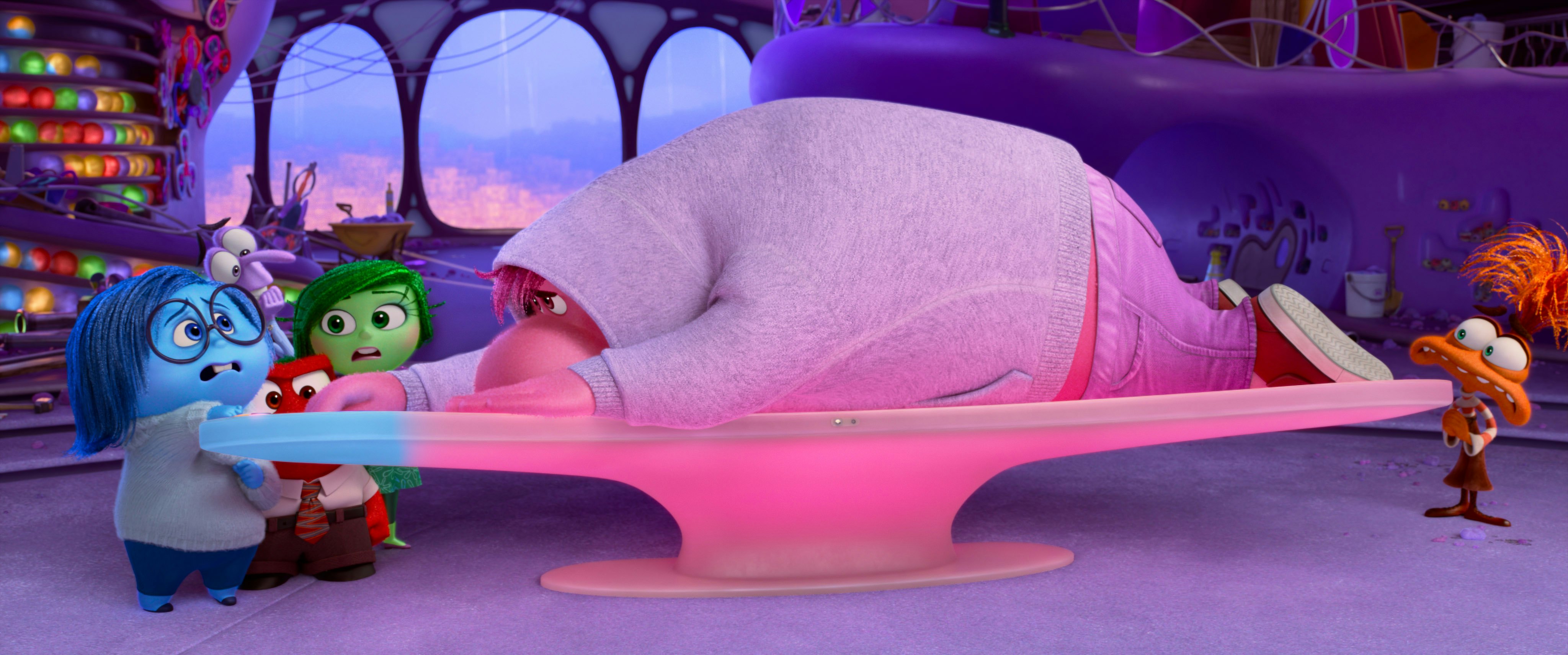
Inside Out’s protagonist Riley is finally a teen, and you know what that means: new emotions! In the first movie, 11-year-old Riley learns how to manage her five emotions – Joy, Sadness, Anger, Disgust, and Fear — which are all prominent characters in the film. Nearly a decade later, the long-awaited Inside Out 2 starts with Riley just turning 13. The worrying “puberty” alarm that showed up at the end of Inside Out has finally gone off, triggering the arrival of four new socially-motivated emotions (Anxiety, Embarrassment, Envy, and Ennui), who appear out of nowhere.
Do teenagers suddenly get new emotions? No, according to Pamela Cole, a clinical psychologist at Pennsylvania State University who studies emotional development in early childhood. “That is developmentally incorrect,” she told Inverse. And it’s important to talk about why: “We do not want the public thinking anxiety emerges at adolescence.”

When do our emotions actually first show up?
Every teenager — and their parents — would recognize the movie’s new emotions as being quintessential to the adolescent experience. And clinical psychologists, adds Cole, would agree that they are often central to the experience of the adolescent clients they see. Yet in reality, anxiety, envy, embarrassment, and boredom all show up much, much earlier: around two years old.
Things do change during puberty, but not because new emotions emerge. Rather, puberty intensifies existing emotions. That’s partly due to the major biological changes and hormone fluctuations that, evolutionarily-speaking, are meant to prepare people for mating and childbearing, Cole says. For instance, the brain becomes more attentive to other people’s faces during puberty, perhaps to help select a mate. Socially, too, teenagers are thrust into more complex situations, like clique dynamics at school.
Yet developmentally speaking, people first process themselves in the eyes of others as toddlers. So that’s when these social emotions start to show. “You can see a bored toddler, no question. And you can see embarrassment,” Cole says. “We see children with anxiety disorders who are in preschool.” The emotional lexicon is well established by the time they reach kindergarten.

How many emotions are humans capable of experiencing?
Psychologists still debate the total number of emotions humans are capable of, but it's likely far more than those represented in the film. A recent study suggested there are 27, and most of these emotions, too, have their roots in the toddler years. “All of these things have a real long developmental course,” Cole says.
To Inside Out’s credit, they did consider including more emotions when crafting the original film. One of the movie’s psychology consultants, Dr. Dacher Keltner, had argued for 20 emotions in the movie, but writer-director Pete Docter told him, “‘We can’t do that, artistically, so choose five,’” recalled Keltner in an interview with Time. Same with the sequel, in which Dr. Keltner told Time he would have liked to include indignation, another classic teenage emotion.
Cole wishes that they included shame, guilt, and empathy. We see them depicted in the movie, but they’re not credited as such. For instance, we see Riley help the new girl who dropped something in class – that’s empathy, says Cole. And when Riley makes a poor decision later on (no spoilers!), she presumably would have felt guilt, but Sadness was at the controls instead.
These emotions – which could be considered the moral emotions – might seem more complex than some of the others. Indeed, Dr. Keltner said to Time that they could be a good focus in a future movie. But once again: moral emotions emerge in toddlerdom, even though a toddler probably couldn’t put words to why they’re feeling empathetic or guilty. “As a developmental psychologist, you quickly realize that you're coming to verbalize about things you already have some experience with,” says Cole. “The verbalization is not producing them.” (The sense of self develops around age 2, too, though the movie suggests that it forms in preadolescence.)

What does happen to our emotions during adolescence?
The idea that emotions and sense of self don’t emerge until so late neglects the rich emotional world of very young people. Still, many of the messages in the movies are important ones, including that all emotions, positive and negative, have a function, says Cole.
There is one thing that the new film gets spot on: the ability to manage our emotions. In one scene (spoiler), Riley seems to summon Joy, something she has not done before. The process of acknowledging an emotion, examining it, and then summoning a new one is a core tenet of cognitive behavioral therapy that’s used in clinical practice. “That's something that requires sufficient development to do,” says Cole. “You couldn’t do that with a two-year-old.”
And while the sense of self emerges at age 2, its development lasts throughout our lives. So it’s reasonable that Riley would be grappling with her sense of self at age 13 and beyond. That’s something that she is in charge of determining, says Cole. “As you grow through adolescence, you form your sense of self, and it's you who forms it. The emotions can’t create the sense of self.” Perhaps the emotions are at the console – but Riley is at the wheel.







